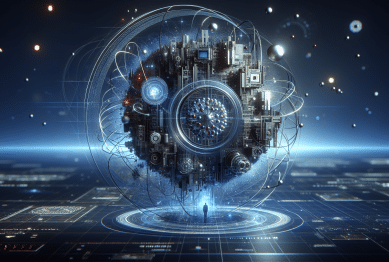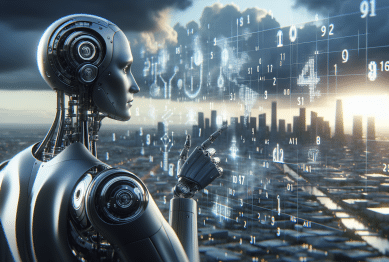Machine learning has sparked worldwide curiosity as it transforms industries, drives innovation, and reshapes technology’s future. This deep dive explores essential concepts, real-world examples, and trends driving high demand for artificial intelligence, data science, and algorithmic solutions.
Why Machine Learning Captivates Modern Technology
Few advances in recent decades have impacted our digital landscape like machine learning. The field emerged from artificial intelligence but has developed a distinct focus: using massive datasets, mathematical models, and algorithms to help computers recognize patterns, learn from experience, and make autonomous decisions. This transformative approach drives much of today’s rapid innovation, from personal assistants that adapt to your habits, to advanced recommendation systems shaping what people watch, read, and buy. It’s the engine behind technologies that seemed futuristic just a decade ago.
One reason machine learning draws such high interest is its versatility. Data science experts leverage supervised learning, unsupervised learning, and reinforcement learning to tackle diverse challenges. In healthcare, for instance, machine learning algorithms help doctors predict patient outcomes and identify early disease markers from complex medical scans. In agriculture, data-driven algorithms optimize irrigation and predict yields, using remote sensing and weather data. Automated models have become indispensable in cybersecurity, energy management, and even environmental research.
Curiosity about machine learning doesn’t just stem from its technical brilliance. There’s a profound sense that this branch of tech has the power to revolutionize how people live and work. Businesses see competitive advantages, researchers dream of new discoveries, and individuals witness smarter technology in daily life. The ability to automate complex decision-making and process enormous information streams has catapulted machine learning into a coveted, high-earning field across the globe.
Core Concepts: Algorithms Shaping How Machines Learn
At the heart of machine learning are algorithms—sets of instructions that enable machines to process data, adapt, and improve without being explicitly programmed step by step. A popular approach, neural networks, is modeled after the human brain and excels at image recognition, language translation, and voice processing. Decision trees and support vector machines find application in financial forecasting, fraud detection, and diagnostics. These algorithmic tools empower systems to ‘learn’ from previous results, making future predictions more accurate over time.
Supervised learning involves feeding algorithms large, labeled datasets, allowing systems to recognize relationships and predict outcomes when new, unseen data arrives. Unsupervised learning, by contrast, lets systems find structure in unlabeled data by identifying hidden patterns or groups. Clustering, for example, is commonly used in market segmentation to group consumers by behavior. Reinforcement learning stands out for applications like robotics, where agents learn through trial and error—receiving rewards or penalties as feedback—to master complex tasks over time.
These foundational concepts create flexibility. Data scientists craft custom solutions by combining algorithm types, feeding in real-world data, and continuously refining models. This experimentation produces more accurate, adaptive systems. Key innovations—like deep learning and transfer learning—continue to push boundaries, letting machines solve increasingly sophisticated challenges. Understanding these core elements opens doors to the rapidly expanding fields of artificial intelligence and data science.
Applications Transforming Industries Worldwide
Real-world applications fuel the global surge in machine learning interest. In finance, predictive modeling powers fraud detection and portfolio optimization by recognizing suspicious transactions or identifying high-value trends. Tech giants use personalized recommendation systems to drive content engagement—think of how streaming platforms suggest what to watch next or how online retailers surface products tailored to individual preferences. Machine learning models constantly refine these suggestions, improving both user satisfaction and business outcomes.
Healthcare is benefiting from advances in medical image analysis and predictive analytics. Algorithms now assist radiologists in detecting cancers and guide clinicians toward customized treatment plans. In transportation, self-driving car technology uses machine learning for path planning, obstacle detection, and real-time decision-making. Smart cities integrate data science solutions for energy efficiency, traffic management, and predictive maintenance, reducing costs and environmental impact. Each of these breakthroughs hinges on robust algorithms and high-quality data.
Unseen by most, machine learning reshapes the supply chains, farming methods, and even disaster response strategies. Natural language processing (NLP) has expanded its influence, equipping chatbots, translators, and information retrieval systems with greater fluency. Cybersecurity solutions leverage anomaly detection to counteract evolving threats. These high-impact applications demonstrate how machine learning is now a cornerstone of progress, fueling new business models and addressing critical global issues across domains.
The Data Science Pipeline: Turning Raw Data into Action
Before machine learning models can reveal insights or drive automation, clean, structured data is essential. The data science pipeline describes the journey from raw inputs to actionable predictions. First, data engineers collect and clean diverse sources—such as transaction logs, medical scans, or sensor feeds—addressing inconsistencies, filling gaps, and ensuring privacy. Prosperous machine learning projects prioritize robust data governance, recognizing that privacy and security standards are not just technical hurdles, but public trust imperatives.
Feature engineering follows, in which data specialists select the most significant attributes from a dataset and transform them into usable formats. This step demands deep domain expertise. Next, the model training phase involves choosing suitable algorithms and rigorously evaluating them for accuracy, bias, and explainability. Data scientists use validation and cross-testing, ensuring models generalize well to real-world situations, not just the examples they’ve seen before. These best practices build dependable, ethical artificial intelligence systems.
Finally, deployment translates research into action. Models are integrated into applications or processes—sometimes retrained on the fly as new data emerges. Ongoing monitoring, refinement, and feedback loops complete the cycle. When done right, this pipeline transforms vast information streams into prescriptive analytics, smarter automation, and tangible business or social impact—revealing the unseen engine that powers today’s digital world.
Emerging Trends: Where Is Machine Learning Going Next?
Machine learning is evolving at a rapid pace, fueled by breakthroughs in computational power and access to massive, fast-moving datasets. One disruptive trend is federated learning—where models train on decentralized data across devices, preserving user privacy while creating smarter systems. Automated machine learning (AutoML) platforms are also gaining traction, allowing non-experts to build customized models by abstracting away the complexities of feature engineering and tuning.
Another frontier is explainable AI, which addresses the ‘black-box’ nature of many deep learning systems. Researchers and engineers now focus on making algorithms more transparent, enabling users and regulators to understand how decisions are made. This movement is especially vital in sectors like healthcare or finance where high-stakes outcomes demand accountability. Responsible AI initiatives prioritize fairness, inclusivity, and minimizing unintended bias, creating a safer, more equitable future for intelligent automation.
Opportunities continue to expand with applications in quantum computing, edge devices, and creative disciplines such as art, music, and design. New architectures like transformer models are revolutionizing natural language understanding, generating text, and even enabling real-time translation. For those invested in technology’s future, these trends reveal immense opportunity—and a reminder that staying informed is key to benefiting from and guiding the next phase of innovation.
Building Skills: Education and Career Pathways in Machine Learning
The demand for data scientists, machine learning engineers, and AI researchers is rising dramatically as organizations realize the necessity of AI-driven decision making. Accredited universities, major tech platforms, and nonprofit organizations now offer structured training and certification opportunities—many accessible to wide audiences online. Foundational skills in statistics, computer science, and mathematics are often recommended stepping stones before advancing to deep learning or real-world model development.
For those interested in entering this field, hands-on projects matter. Open-source datasets and free machine learning frameworks provide an entry point for practical experimentation. Learning to manipulate data, select and tune algorithms, and articulate model results builds confidence and workplace relevance. Professional organizations frequently sponsor workshops and hackathons, promoting continuous growth and skill-sharing in this fast-moving industry. Whether transitioning from IT, engineering, or academia, technology specialists can bridge knowledge gaps through targeted programs referencing real-world use cases.
Finally, ongoing education is essential. The landscape shifts as new algorithms, languages, and frameworks emerge. Community-led resources, such as forums, collaborative platforms, and nonprofit-funded courses, foster peer learning and help democratize access to high-value skillsets. Keeping pace with the evolution of artificial intelligence is not just about career opportunity—it’s about shaping the future of how technology interacts with people and society at large.
References
1. National Science Foundation. (n.d.). Harnessing the Data Revolution. Retrieved from https://www.nsf.gov/cise/harnessingdata/
2. European Commission. (n.d.). Artificial Intelligence. Retrieved from https://digital-strategy.ec.europa.eu/en/policies/artificial-intelligence
3. Stanford University. (n.d.). AI Index Report. Retrieved from https://aiindex.stanford.edu/report/
4. World Economic Forum. (n.d.). The Future of Jobs Report. Retrieved from https://www.weforum.org/reports/the-future-of-jobs-report-2023
5. Johns Hopkins University. (n.d.). Machine Learning. Retrieved from https://www.jhu.edu/about/our-impact/machine-learning/
6. The Alan Turing Institute. (n.d.). Data Science and Artificial Intelligence. Retrieved from https://www.turing.ac.uk/research/data-science-and-artificial-intelligence









